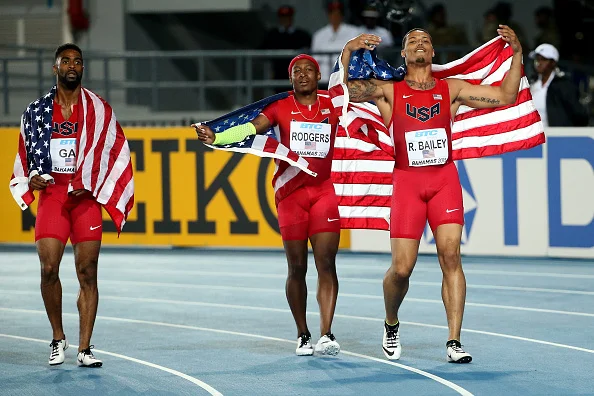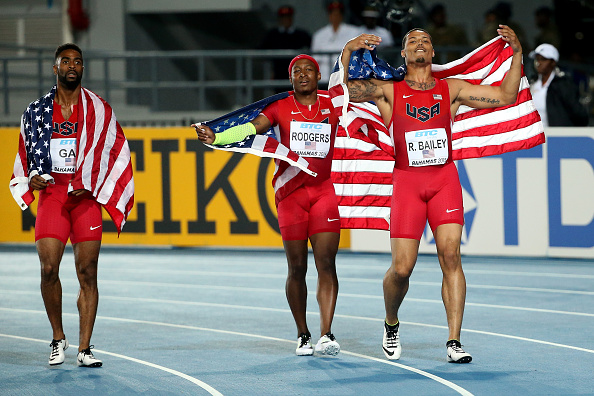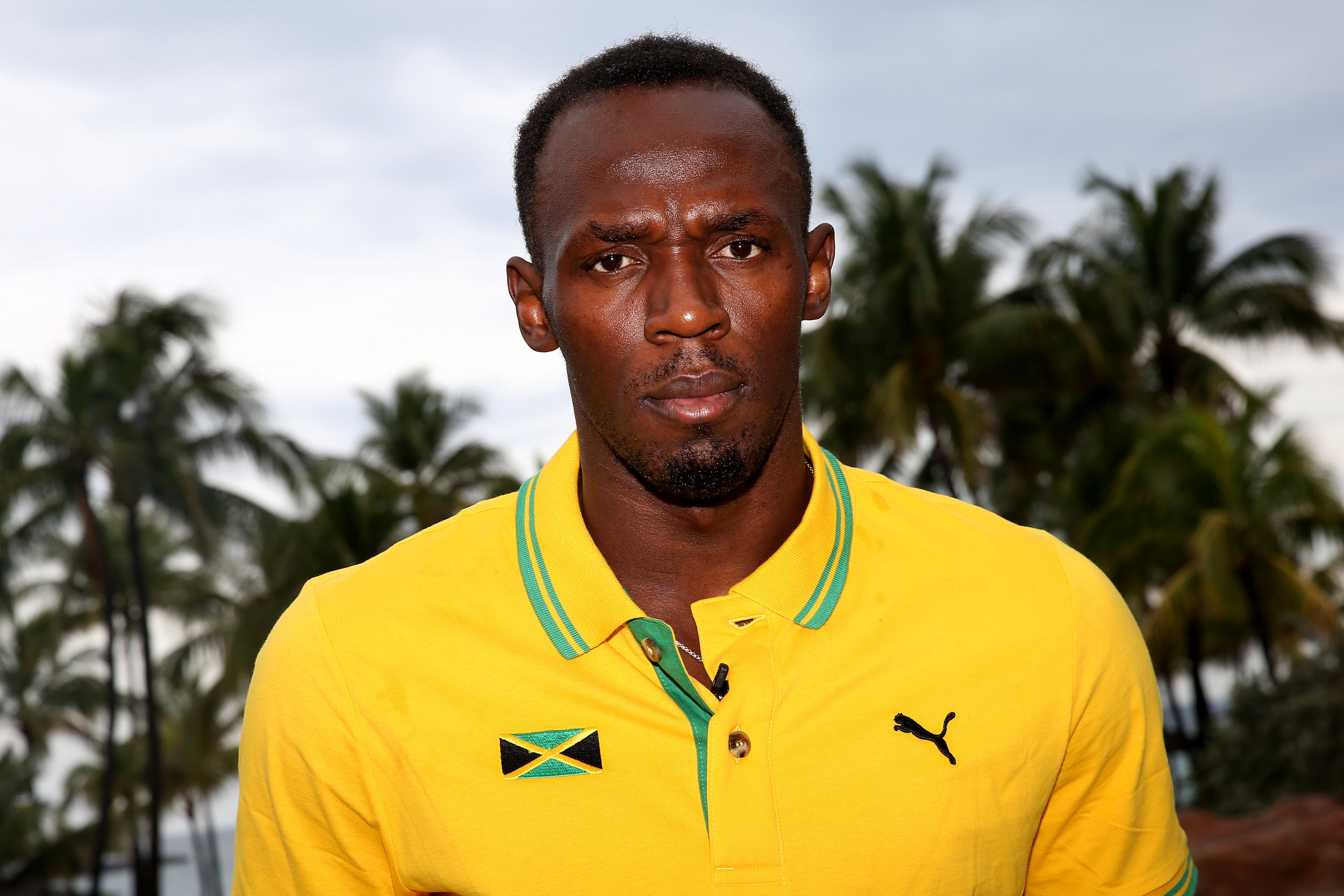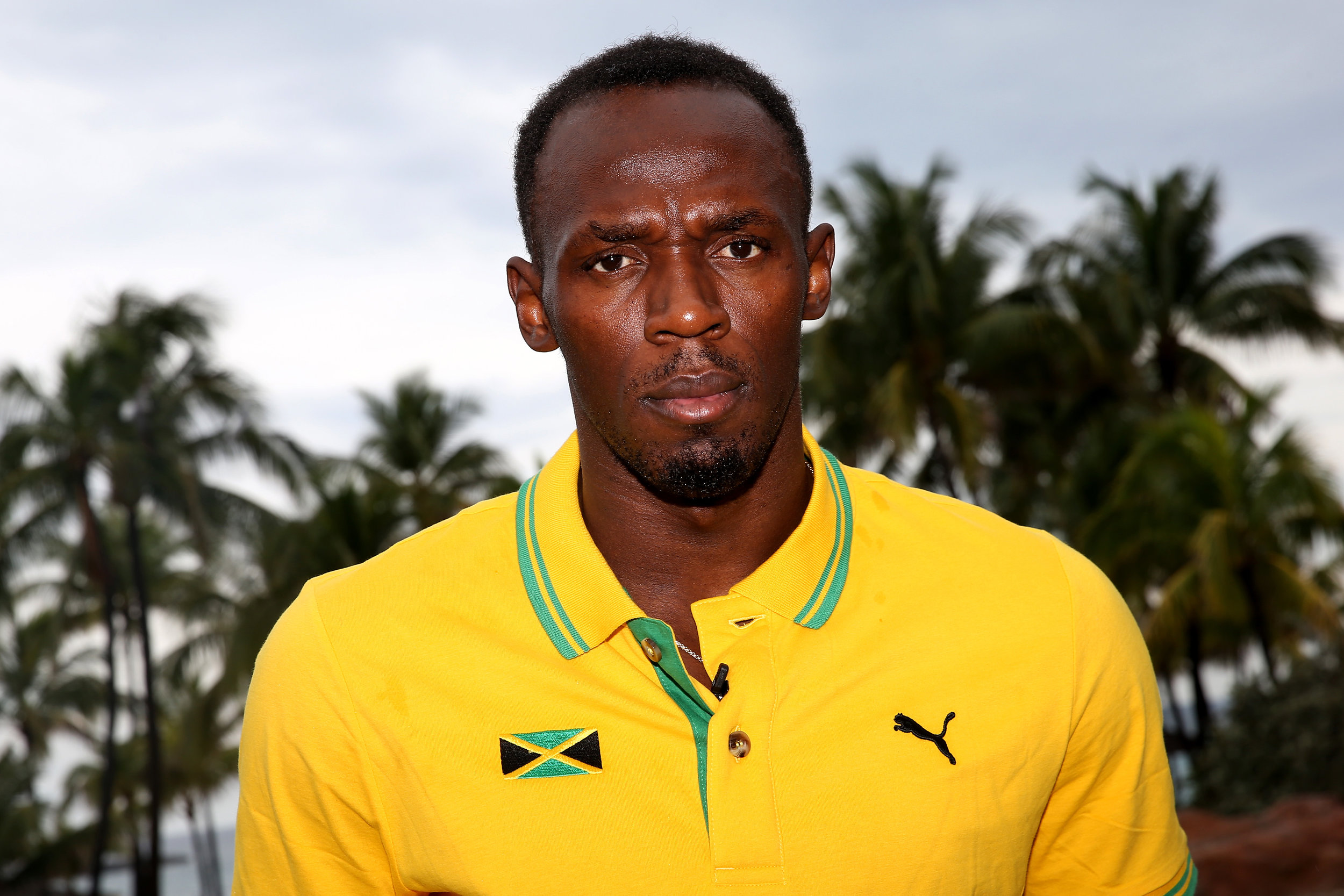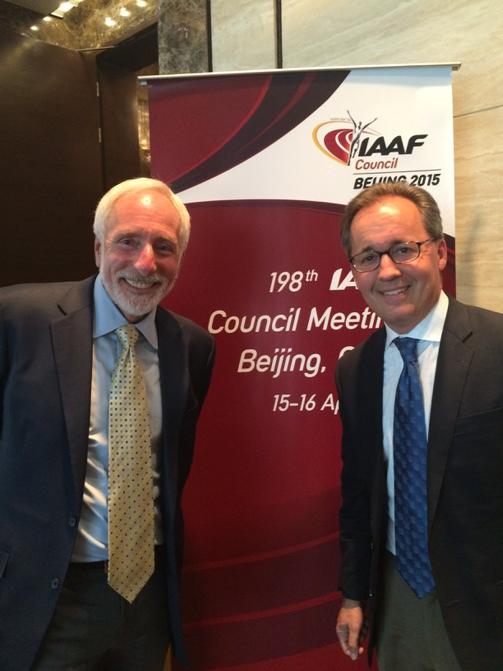NASSAU, Bahamas — It’s better, as the saying goes, in the Bahamas. They held the first edition of the IAAF World Relays here last year, to resounding success, such success that they resolved to do it all over again.
They needed just one more thing, really, to make the show even bigger and better, the biggest star of them all, the guy who is, more or less track and field in these first years of the 21st century, and when Usain Bolt took the baton and kicked it into gear on the blue Mondo track, you would have thought Thomas A. Robinson Stadium was going to lift off into the moonlit sky.
“Success is a powerful magnet,” Lamine Diack, the president of the IAAF, track and field’s international governing body, had said Friday, at a news conference, adding that officials were “therefore delighted” that Bolt was on hand for this second edition of the Relays.

Make no mistake — Bolt’s appearance this year is testament not only to his desire to gear up for the world championships in August in Beijing but, as well, to last year’s demonstrated success of the Relays and the word-of-mouth on the circuit of how much fun the event is for all involved.
When the junkanoo band is rocking, as it was for the men’s 4x800, and it’s the last lap and Robbie Andrews of the United States is kicking like his hair is on fire, and he crosses the line in a competition-record 7:04.84, pointing the baton in victory at his teammates, and fireworks go off — this is what track and field not only should be, but could be, all the time.
Same just a few minutes later when the U.S. women — with but one Olympic champion in the event, Sanya Richards-Ross, the 400-meter specialist — blows away the field to set a new world record, 10:36.5, in the distance medley, which goes 1200, 400, 800, 1600. The other three: Treniere Moser, Ajee Wilson, Shannon Rowbury.
Even the losers — well, the non-winners — almost always have a great time at the Relays. The Canadian men’s 4x100 team was disqualified for the tiny matter of not having the baton that they give you at the beginning of the race and insist you have at the end. Said anchorman Justyn Warner: “I didn’t have a stick with me. It stayed somewhere in the beginning of the race. I just ran for fun. It is a great meet!”
Remember, that’s almost always. On the final handoff of what looked like a sure U.S. win in the women’s 4x2, Jeneba Tarmoh and Felix could not execute and both tumbled to the track. Nigeria won, in 1:30.52.
For those keeping score: that’s 2-for-2 for the U.S. women in botched exchanges at the World Relays, one this year and one in 2014. Last year, Katie Mackey fell down after a collision with the Australians.
More scoreboard: of 11 major championships dating to the Paris 2003 worlds, the U.S. woman have had relay screw-ups in five. Add in the retroactive doping DQ from Edmonton 2001, and it’s six of 12. That’s not good math.
Back to the positive: these Relays provide evidence of how a win-win can work all around.
For track and field, it’s evidence of how innovation can spin the sport forward. The IAAF took a chance in adding an event to the calendar — amid grumbling that it was too early in the year, that a relay-only event was too novel, that overall it came with too many risks.
“This is an event on which we took a chance,” Frankie Fredericks, the great 1990s sprinter from the west African nation of Namibia who is now a member of both the policy-making IAAF council and the International Olympic Committee. “We need to take more chances in our sport.”
Credit Diack, in particular, with pushing ahead.
He said the Relays make for “the latest example of [track and field’s] continued evolution as a sport.”
Last year’s meet saw three world records and 37 national marks. The Jamaican 4x200 team, with Yohan Blake anchoring, lowered the world record to 1:18.63, taking five-hundredths off a mark that had stood for 20 years — by a Santa Monica Track Club team anchored by none other than Carl Lewis.
Blake is not here this year. Bolt is.
The pre-meet news conference Friday — spurred by last year’s success perhaps, maybe by the draw of Bolt — drew double the reporters it saw last year.
For the government and businesses of the Bahamas, meanwhile, the Relays are pure gold.
Last year, the Robinson track had to be resurfaced and various other capital improvements had to be made, Lionel Haven, the managing director of the local organizing committee said. All told, investment totaled $9 million. Balanced against that: a survey done after the meet by a Canadian firm totaled positive economic impact at $26 million.
That is pretty easy math.
Last year, Haven said, was a “unique year,” because of the various start-up investments — which, obviously won’t be required this time around.
You can almost hear the cash registers cha-chinging around Nassau.
At the same time, too much of a good thing is, well, too much. So the third edition of the Relays won’t go down until 2017, again back here in Nassau.
“It’s going to become even better,” year by year, Fredericks said, adding, “Now people realize this is serious.”
And, at the same time, serious fun — the very thing track and field needs.
As Bolt said Friday, “Any time I compete in the Caribbean, I get so much love.”

He made his first on-track appearance, for the first heats of the men’s 4x1, at 7:37 p.m.
The crowd, sensing a disturbance in the force, went nuts.
Ever the showman, Bolt played to the audience, walking up and down the backstretch, waving a little bit, before taking up his position at the top of the stretch in Lane 8. When the camera showed him on the big screen, he smiled a big smile and blew a kiss. That drew a big roar.
The locals saved a bigger roar for the Bahamas team, which by unfortunate luck drew Heat 1, against the Jamaicans.
Alfred Higgs of the Bahamas, a 23-year-old who three years ago ran a personal-best 10.4 in the 100, can one day tell his grandchildren he ran against Bolt.
As they lined it up, and Bolt was blowing them that big kiss, the crowd yelled, “242!” — the area code for the Bahamas, showing some local love. Bingo the Potcake dog, the 2015 Relays mascot, sporting a “242” headband, shook it down.
Alas for the men from the Bahamas, they finished sixth in a field of seven, in 39.32, and would not qualify for the finals.
Bolt had an easy jog across the line in first, the Jamaicans finishing a world-leading 38.07.
In the third of the three heats, the Americans — with Mike Rodgers running the first leg, Justin Gatlin the second, Tyson Gay the third, something of a three-way doping redemption tour in under 40 seconds — took back the world lead, in 37.87, Ryan Bailey (no doping issues) way ahead by the time he got the baton for the anchor leg.
This proved a marked improvement over 2014, when the U.S. 4x1 team had been disqualified in the heats, the result of a bad pass, Trell Kimmons to Rakieem Salaam, Man 2 to 3 on the backstretch.
The final saw the same four Americans in Lane 5.
The Jamaicans — the same four as well, Nesta Carter, Kemar Bailey-Cole, Nickel Ashmeade, Bolt — lined up in Lane 4.
As the gun went off, Bolt waited, hands on his hips. The noise in the stadium: 242-style loud.
At 300, he settled into position.
He never had a chance.
Rodgers to Gatlin to Gay had put Bailey in such a commanding lead — through 300, the U.S. was at 28.55 — and then Bailey ripped off an 8.83-second finishing leg. The batons this year have transponders in them so the timing is incredibly precise.
The Americans won in 37.38, Bolt — who, incredibly, was gaining on Bailey — and Jamaicans second in 37.68.
Candidly, both teams executed below-average passes as the stick went around the track. But there were no drops.
Who, meanwhile, was that at the finish line doing a brief exposition of the famed “lightning Bolt” phase? Could that have been Bailey? And was that, at the end, the briefest turn into a throat slash?
“It felt great,” Bailey said.
“I mean, victory always feels good,” Gay said.
Gatlin, whom Bolt had singled out before the race for talking, and a lot, spoke afterward only of how the Americans and Jamaicans had mutual “respect.”
That was for public consumption, of course.
Here was Bolt: “It’s not the first time I’ve come second.”
Here was the real tell: in the news conference, as he listened to questions and answers, Bolt’s body language said more than any words. His arms and legs were crossed. He is angry, frustrated and determined.

That is all good stuff.
You think Saturday night was good for track and field?
It was great.
“All it says,” Bolt said when asked what second-place here means, “is we need to go back to the drawing board.
“All it says is we are excited for the showdown in Berlin.” He quickly realized his mistake and threw his hands above his head. “Beijing, sorry.”

